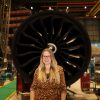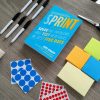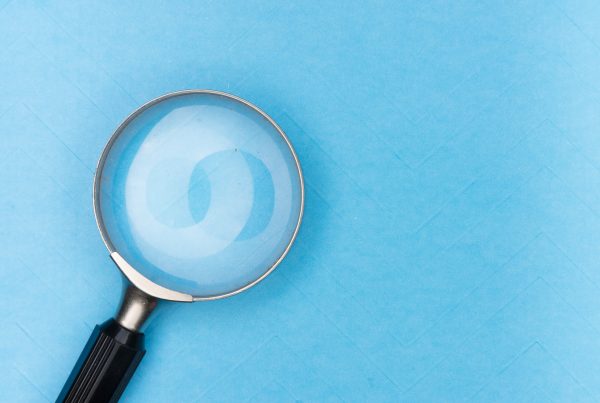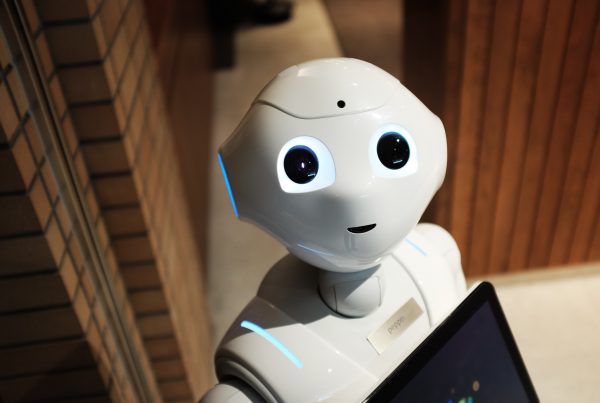At KLM Digital Studio we have been building Virtual Reality training environments for several years. Thousands of KLMers learn how to put out fires on board, link walkways to aircraft and how to navigate the sea of works in an aircraft cockpit. But there are limits: “VR is super cool and sexy, but you have to use it for things that can make a difference.” This is how Virtual Reality changes KLM.
‘The beauty of VR is that you are completely isolated from the outside world. You are immersed in the world that you encounter on the inside of your VR glasses, giving your brain the impression that you are really in that situation. That is not only a special sensation, you can also train scenarios that are difficult to replicate in the real world. There you’ll find the unique strength of it,’ Daisy Navarrete Schuiten of KLM Digital Studio (DS) explains. She knows, because she has been a training expert at KLM for years and since 2018 she has been a Digital Learning Developer at DS’s VR scrum team. If something is developed in the training field, she makes sure that you really learn something from it: ‘In virtual reality you train your brain as if you are really experiencing the situation. What you learn in this way comes to you more intensively and you remember it much better than when, for example, you learn a procedure from a book.’
Evacuation
We have been working with Virtual Reality at KLM for five years. It all started with a tiny experiment in Hangar 10 at Schiphol-East. There, the aircraft engineers have to train every year how to evacuate the hangar in case of an emergency. It turned out that if you equip them with a VR headset and thus learn which routes they should take, after a month they would remember much better than their colleagues what to do in an emergency. It was a relatively simple application of film in VR, but that first test in the hangar went so well that KLM Digital Studio formed a team of programmers and 3D artists that are now working full-time on building VR practice environments.
On the first floor of the Tristar 2 building at Schiphol East you can now experience what Virtual Reality does to you. The VR team is working there with the most modern hardware on the training sessions of tomorrow. As soon as you put those glasses over your eyes, the real Schiphol suddenly seems very far away and you find yourself in the Cockpit of an Embraer 190, the newest project of the team. It all seems lifelike when you see that sea of buttons and screens in front of you. ‘It ís lifelike,’ stresses Chris Roos, who is the product owner of the VR team. ‘We have recreated the cockpit very precisely. You’ll find everything where it belongs. We use this VR environment for the cockpit familiarization training of pilots who will fly with this aircraft type. They learn where which buttons are located and in which order they should be switched on or off. On your virtual clipboard on the left you see what needs to be done and you do the first training with the help of highlights around the buttons. Later those highlights disappear and you have to do the training under time pressure. ‘This cockpit training is already being used at KLM Cityhopper, the business unit that flies the Embraer,’ says Chris. ‘They are very happy with it. Learning to understand and use the cockpit functions is now really faster. That saves simulator time and it is just more fun than learning everything from books.’
Mobile bridges
And so the team builds on many more applications. By example, for personnel who operate the mobile bridges that connect aircraft to the piers. It was an idea of the aircraft handlers themselves. Because until recently, a real plane and a gate had to be available to practice this skill. A situation that occurs very rarely at Schiphol. That is now solved. Chris: ‘If you think about it for a moment, the use of Virtual reality for KLM is actually a no brainer. After all, our pilots have been training in simulators for a long time, which is safer, more practical and much cheaper than actually taking off with an airplane. We find that quite normal, but until recently it did not apply to many other professions within KLM. We train them in practice, in a classroom or let them tinker with an exercise motor, for example, but that often involves high costs and many practical limitations. Look at the fire safety training for example. The cabin crew now conducts them in reconstructed steel cabins and with actors. That costs a lot of money, its capacity is limited and it never gets to feel very realistic. Once you recreate such a situation in VR – we now have training where you learn how to extinguish a fire aboard a flying virtual aircraft, including difficult passengers intervening – then you can replicate it endlessly. The experience you have in VR is much closer to the complexity of reality than that of a traditional simulator, so you better prepare your employees for practice. It is our goal to ensure that colleagues who experience such a situation think “I have already done this” and that they know exactly what to do.’
Not for all situations
VR is therefore very suitable as an additional learning tool, yet it is by no means the solution for all learning problems, Daisy knows: ‘When it comes to experiences and the decision-making processes that come with it, VR is a great addition. Think in particular of training situations that are rare or dangerous, or where you need to learn complex and abstract things. But if you want to teach people standard procedures, then a book and a classroom – or a walk around the platform – is often better and more efficient. VR would add pointless overhead. If it is simple, keep it simple. But it is precisely when it becomes complicated or very expensive that you have us, the possibilities are endless.’
Which VR applications does KLM DT make?
What once started with a small evacuation training for the hangar has now resulted in a wide range of VR applications. An overview:
– The startle & surprise training, with which all KLM pilots learn to deal with unexpected incidents, for example a bird that hits the windshield at 1000 kilometers per hour. Training ensures that you better deal with that kind of intense shock moments in real life.
– The fire safety training for KLM Cityhopper (regional flights in Europe) teaches stewards how to act if a fire breaks out on board. Including the correct handling of fire extinguishing material and virtual passengers who interrupt you when you are busy.
– With the jetway bridge training ground staff learn how to safely connect the movable bridges to aircraft. As a result, empty planes and free piers – both rare – are no longer needed and KLMers can also practice freely without causing damage.
– In the Cockpit Familiarization training for the Embraer 190, pilots learn where all the buttons in this aircraft type are located and how the airplane’s start procedure has to be conducted. This means that pilots do not have to work for hours in real simulators that cost thousands of euros per hour.
– VR door training. Although we have fixed setups with airplane doors in our training centers, the immersion is limited: the crew members constantly realize that it is only a training. How different is it with the addition of VR, where you can see a sea of flames when you open the door, for example. Or where panicked passengers are pushing against you to go outside. The real door is synchronized with the VR door: you actually grab something.
– And the communication training for pilots brings them into the unique situation in which they have to conduct bad news conversations with passengers. For example, announcing a delay. Such a message is usually better received if you bring it personally rather than through the intercom. But now you have to do that that while 100 angry eyes look at you. Or when people start filming you with their smart phones. That is hard to train in real life. And very easy with VR.
The learning pyramid
That Virtual Reality is effective in learning new skills is illustrated by the so-called learning pyramid of Dale. This is a scheme that was drawn up by the American educational scientist Edgar Dale in the last century and shows how well knowledge is retained after you have learned it. Experiencing the learning material yourself is the best method to learn something. Precisely that is what Virtual Reality provides. ‘We call it experiential learning,’ says Daisy. ‘When you enter a VR world, you no longer get distracted, you are completely in your own bubble, so the data comes in much more intensively. We see it in our own research, your knowledge really sticks better, it is one of the most effective learning tools that we have.’










